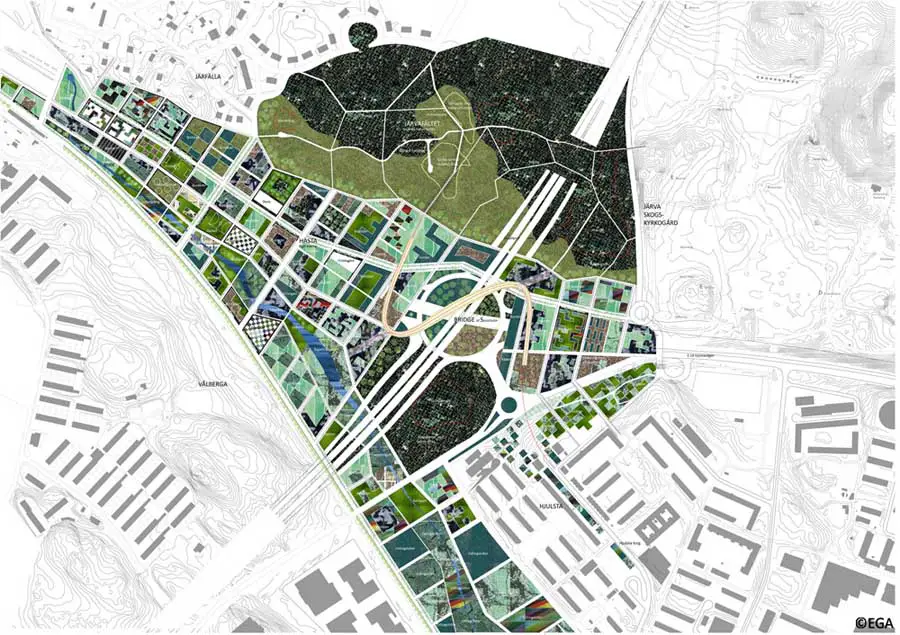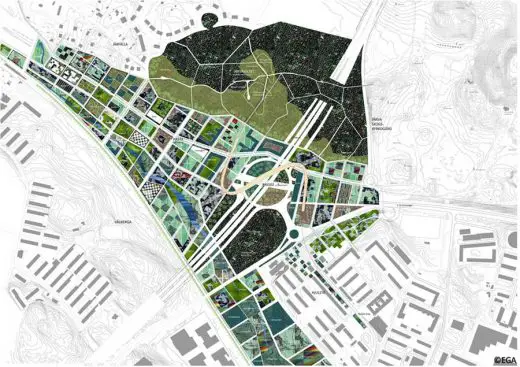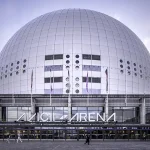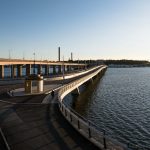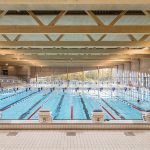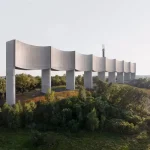Stockholmsporten Bridge, Järvafield Design, Hjulsta and Barkaby
Stockholmsporten, Sweden : Sculptural Bridge
Swedish Bridge project design by Erik Giudice Architects (EGA)
22 Mar 2011
Stockholmsporten
[2011]
Design: Erik Giudice Architects
STOCKHOLMSPORTEN_ GATE TO STOCHOLM
The project’s center is a pedestrian and bicycle bridge that connects the neighborhoods and countryside on the road’s four sides, a work of art and a sculptural landmark: a new symbol for Stockholm.
The artwork interacts with the magnificent landscape and creates a connection in time and space between nature, city and infrastructure. The bridge becomes a passageway and a meeting place where the spectacular and the everyday are tied together.
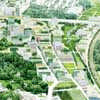
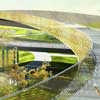
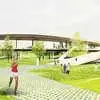
images : Erik Giudice Architects
The bridge’s shimmering materiality varies depending on the viewer’s position, movement and speed. The bridge can be viewed from several different perspectives: towards Järvafields undulating topography it appears as a land art piece, from the roads it is perceived as a dynamic sculpture, for pedestrians and cyclists crossing the bridge it creates a kinetic experience, and at night it becomes a light installation.
The metal mesh that forms the bridge’s skin, appears depending on the geometry in some cases almost translucent, and in certain angles as massive. The fabric catches the light and colors from the environment, various light conditions during the day and year gives the bridge a wide range of colors and shades, from bright yellow one early spring morning to orange at sunset in September and saffron yellow against the winter snow. When night falls, the integrated lighting provides a warm golden light.
The sandblasted metallic fabric gives a shimmery surface, but no reflections that could cause to road safety problems. On the bridges sides the metal mesh forms a screen that provides protection against wind and weather for pedestrians and cyclists. The railing height increases progressively from 1.5 m on ground to 3 m at the bridges highest point.

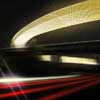
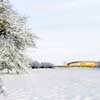
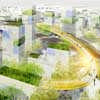
images : Erik Giudice Architects
Entrance
The bridge forms a key sequence in the walk-and bicycle path that goes from Hjulsta to Barkaby City and from Bälsta river valley towards the Järvafield. The bridge creates both an entrance to Stockholm and to the surrounding neighborhoods and green spaces: Järvafield, Hjulsta and Barkaby.
Since the bridge passes over the infrastructure, the pedestrians and cyclists get spectacular new viewpoints towards the surrounding landscapes and neighborhoods, which increases ease of orientation and understanding of the place.
The Järva-rise
The project is a new piece in Stockholm’s urban and landscape mosaic, a district with its own strong identity, interwoven with the surrounding neighborhoods and green spaces, buildings, infrastructure and landscape form an organic whole. Good access to public transport: the train at Barkaby Station, the subway at Hjulsta, the proposed extension of the subway line and bus routes and the proximity of one of Stockholm’s largest green space offers the potential to create a socially and ecologically sustainable neighborhood.
The new district includes housing, workplaces, service and trade, integrated as a dynamic part of the Järva-rise, as well as a contribution to Stockholm’s housing needs.
Garden City 2.0
In the new district the focus is on urban agriculture. The district’s identity is connected thereby to the Järvafields historic agrarian landscape while making it a place to develop new solutions in terms of self-reliance and locally produced food. In the new district a very high green space factor is proposed: for each built surface, at least 1.5 times as large green space should be created, including green roofs and walls. The high green surface factor contributes to reduce CO2 and create better air quality.
The goal is that the district shall be self-sufficient in fruit and vegetables and possibly create a surplus production that can be utilized by the surrounding neighborhoods. In this way, the Stockholmsporten contributes to Stockholm’s overall environmental objectives and can also be a place for experimentation and a showcase for innovation in urban agriculture.
In a global perspective the increasing urbanization of the population and food supply is a substantial question that the United Nations through the FOA (Food and Agriculture Organization) set high on its agenda. FOA runs several international programs to increase urban agriculture.
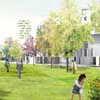
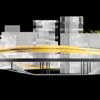
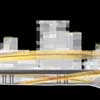
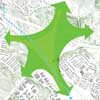
images : Erik Giudice Architects
Urban Structure
The proposed park and garden structure intertwine the neighborhoods and green spaces that are now separated by the existing infrastructure. A mosaic of built and cultivated lots form a flexible urban structure.
The new buildings are varied in height, typology, scale and materials. Variation is also provided through a variety of open spaces: green roofs and walls, public gardens, allotments gardens on the ground and on the roofs, greenhouses, and vertical gardens.
The new district topography stretches in a northwest-southeast direction, and therefore strengthens the understanding of the historical topography. The new district links Hjulsta and and the planned Barkaby city. By bridging the E18 it recreates both the organic link between the northern and southern parks and an urban continuity across municipal boundaries.
Along Bälstariver valley runs a new park and walking path with allotment and collective gardens with focus on urban agriculture in continuity with the existing allotments, which are south of Bergslagsvägen. The Bälstariver and the storm water ponds to be built, forms a network of water features which purifies the rainwater in order to make it suitable for watering the gardens.
On the north side the settlement is limited to the current route position of the E18, thus leaving the existing fields and forests untouched, while the new buildings form a protective acoustic barrier towards the relocated E18 highway creating a noise protected entrance to the Järvafield landscape park.
Phasing
The pedestrian and bicycle bridge is to be built at the same moment as the infrastructure work of the bypass Stockholm. In this way the walking and cycling link between the areas that are separated out of the road network is solved immediately The new neighborhood and park structures can then evolve independently and in phases, starting from south towards north.
Covering the E18 highway
By lowering the position of the E18 highway the conditions are created for a cost-effective covering of this major infrastructure. The covering of the highway increases the urban quality and makes it possible to create a coherent layout of urban and green areas, avoiding interference and “risk” from traffic, while a higher exploitation can be achieved without encroaching on green spaces.
To create a high flexibility in the phasing, the urban structure is organized so that the settlements north and south of the E18 can be made independently of the covering of the highway. The covering can thus be divided into stages and take place wholly or partly dependent on future needs.
Energy
A new technique exploiting the energy created by the vehicles passing on the roads will be used to produce the electricity necessary to illuminate the bridge. This innovative technology is placed under the roadway, it would be natural that Stockholm’s Gate was a pilot project in this area. Alternative solutions may be to convert the heat generated by car traffic in the 17 km long tunnel, or using wind power.
Availability
The design and geometry of the bridge gives a slope of less than 1:20, creating accessibility from phase 1. The urban structure of the following phases is designed to ensure that all streets and walkways have a slope of less than 1:20.The existing difference in height towards Hjulsta is resolved by transverse walkways and an elevator.
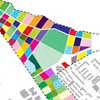
image : Erik Giudice Architects
Stockholmsporten – Building Information
Subject : Entry international invited competition
Organizer : Stockholm City Planning Administration, Swedish Transport Administration, Stockholm Art
Theme : Urban planning, infrastructure, public art and landscape design
Location : New Stockholm bypass crossing E4 / E18 Hjulstamotet
Size : Total area : 415 000 sqm
Park, sport, recreation: 230 000 sqm
Neighborhoods footprint: 185 000 sqm
Gross floor : 330 000 sqm
Stockholmsporten Design Team
ARCHITECTURE AND PLANNING EGA_ERIK GIUDICE ARCHITECTS
Erik Giudice, architect
Federico Mannella, architect
Lars Almgren, assistant architect
Francesca Venezia, assistant architect
Website: www.erikgiudice.com
ART
Charlotte von Poehl artist
LANDSCAPE
URBALAB Marco Rossi landscape architect Laurent Crosmary landscape architect Gilles Azzopardi landscape architect Mathilde BEY assistant landscape architect
BIODIVERSITY
Naturföretaget Niina Sallmen biologist Emma Hulten ecologist Karolin Ring biologist
Stockholmsporten Stockholm Building images / information from Erik Giudice Architects
Stockholmsporten Competition Winner
BIG win
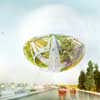
image : BIG, architects
Stockholmsporten Masterplan
Location: Hjulsta, Stockholm, Sweden
Architecture in Sweden
Swedish Architecture Designs – chronological list
Architecture Walking Tours by e-architect
Stockholm Architecture Walking Tours
Stockholm Buildings – Selection
KTH-School of Architecture Building
Tham & Videgård Hansson Architects
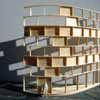
image from Tham & Videgård Hansson Architects
Swedish University Building
Swedish Architecture – Selection
K:fem department store, Vällingby City, Stockholm
Wingårdh Arkitektkontor AB
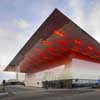
photograph : Patrik Gunnar Helin
K:fem Stockholm
Museum of World Culture – Gothenburg
Brisac Gonzalez Architects
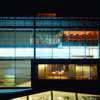
building photo © Hélène Binet
Swedish museum building
Archipelago House, Stockholm archipelago
Tham & Videgård Hansson Architects
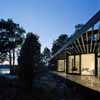
photo : Åke E’son Lindman
Swedish house
Comments / photos for the Stockholmsporten page welcome

